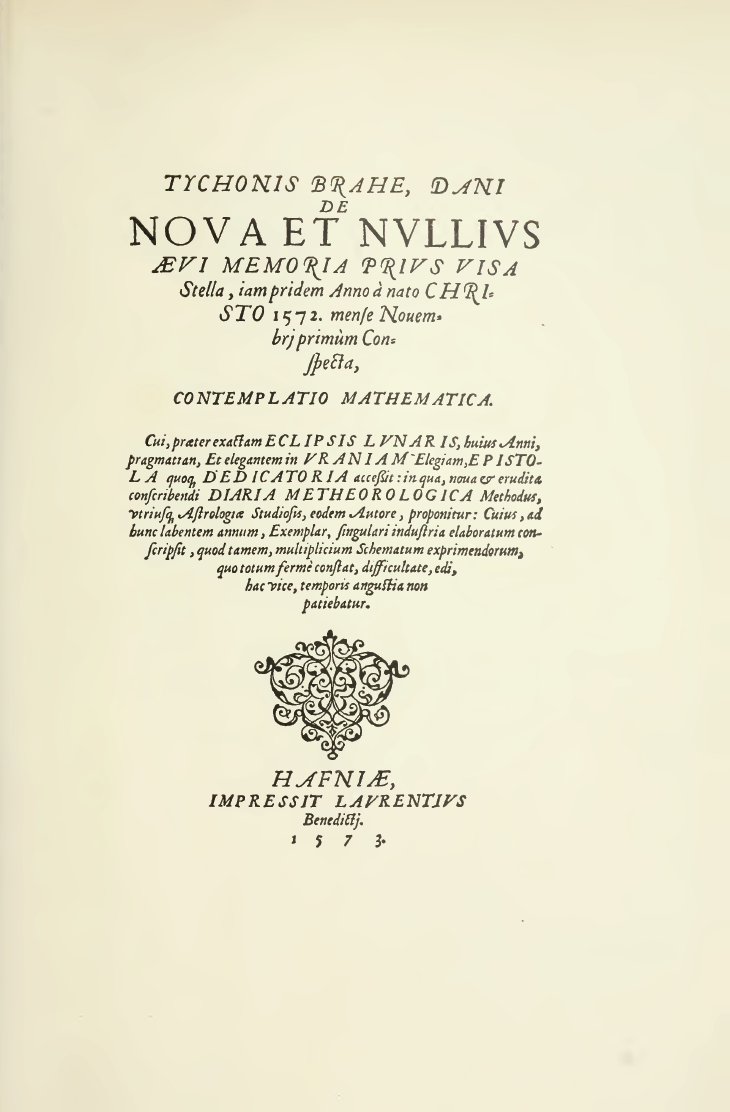
De Nova Stella is of enormous significance, not only for the history of science but for Western civilization in general. Throughout Europe and the Middle East, everyone had firmly believed, for about two thousand years, that everything in the celestial domain was perfect and therefore unchanging. In the heavens, nothing new could ever occur—that whatever one saw happening did so only on Earth or, at least, below the “sphere” of the moon. Tycho was very good at astronomy and expert at making observations. Doing the math, he was able to prove that, since this new star exhibited no discernable parallax while the moon exhibited quite a lot, this new star had to be well above the sphere of the moon. Our view of the world was never the same again.
Tycho's descriptions are straightforwad but unfamiliar. Astronomy books today would be full of equations but this book does not contain even one. This is understandable. After all, the equals sign had been invented just fifteen years before; Tycho had probably never heard of it. Mathematics in the sixteenth century was very different from what it is today. When one reads a book from this period, it is not only the language that can prove difficult.
The translation linked below is not the entire book. Only the astronomy sections have been included. The prefatory dedications and the lengthy sections on astrology have been omitted.
Since the technical material is fairly short and since the original text is seldom seen, this publication includes both the latter and its English translation side by side. It also includes appendices with extensive notes on the observations.
